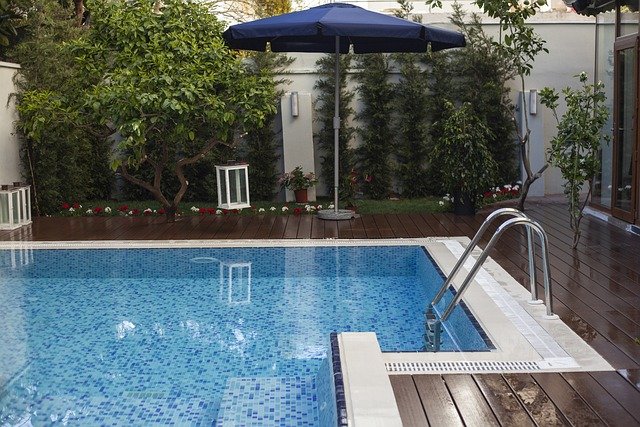Beat the Heat: The Complete Inflatable Pool Buyer's Guide
Looking for an easy, budget-friendly way to cool off this summer? Discover everything you need to know about inflatable pools—from compact kiddie pools to roomy family models. Learn how to choose the right size, keep water clean and safe, store your pool properly, and explore must-have accessories to upgrade your backyard oasis.

Inflatable pools are an affordable, convenient way to add instant summer fun to your backyard. Portable, simple to set up, and available in a wide range of sizes and styles, they offer something for toddlers, teens, and adults alike. This guide covers how to pick the right pool, essential safety steps, maintenance and storage tips, popular accessories, and how inflatable options stack up against above-ground and in-ground pools.
Choosing the right inflatable pool
Start by matching the pool to your space, who will use it, and your budget. Small kiddie pools—shallow and often decorated with playful prints—are ideal for toddlers and quick cool-downs. Their lower walls and simple design make them easy for little ones to enter and exit, and they’re simple to empty after each use.
If you want something the whole family can enjoy, look for larger inflatable family pools. These models have greater water capacity, taller walls, and sometimes built-in seating or loungers that make sitting or gentle splashing more comfortable. Some family pools include extras such as cup holders or inflatable headrests for added comfort.
Material quality matters. Choose pools made from thick, puncture-resistant PVC or vinyl—these resist wear from rough surfaces and toys. Features like quick-drain valves, reinforced seams, included repair patches, and compatible filter pump fittings add convenience and longevity. Always measure the area where you’ll place the pool to ensure a level, debris-free surface and enough clearance around it.
Safety essentials for inflatable pools
Safety should be your top priority. Never leave children unsupervised in or near the water, regardless of depth—drowning can occur in seconds, even in shallow water. Keep a close eye on kids, and consider designating a water watcher during busy gatherings.
Set the pool on a flat, clean area, free from rocks, sticks, and sharp edges that could puncture the material. Place a ground cloth, tarp, or fabric pool pad underneath for added protection. If possible, position the pool in a shaded spot or add a canopy to reduce sun exposure and help keep water temperature comfortable.
For larger inflatable pools used repeatedly, maintain proper water chemistry to prevent bacteria and algae. Use appropriate sanitizers and test kits; follow manufacturer guidance for dosages. Remove toys and inflatables when not supervised to reduce tripping and entrapment risks. Also, keep emergency supplies nearby—life rings, a phone, and basic first-aid materials.
Maintaining and storing your inflatable pool
Regular cleaning preserves both hygiene and the pool’s lifespan. For quick cleanups, a pool skimmer removes leaves and debris from the surface. For more thorough maintenance, a small pool vacuum helps clear settled dirt, and gentle soap with water will clean the pool walls and floor without damaging the material.
For seasonal or prolonged storage, drain and rinse the pool thoroughly, then allow it to dry completely to avoid mold and mildew. Deflate slowly and fold without creating sharp creases—tight, harsh folds can weaken seams over time. Store in a cool, dry place protected from direct sunlight and extreme temperatures; a storage bag or container helps keep pests and dust away.
Repair kits often come with pools—keep patches and adhesive on hand for quick fixes. For punctures during the season, spot-clean and patch according to the manufacturer’s instructions.
Accessories that make inflatable pools better
Several accessories can improve comfort, safety, and enjoyment. Inflatable loungers and floats add relaxation, while pool toys like beach balls, dive rings, and water guns keep kids entertained. For ease of access, a small pool ladder can be helpful for taller family pools.
To protect water quality, use a pool cover to keep debris out when the pool isn’t in use. Solar covers not only keep contaminants away but can also raise water temperature slightly. For longer-use pools, consider a small filter pump and cartridge system to circulate and filter water, and a heater if you want to extend the swimming season.
Other useful items include a hand pump for faster inflation, a ground pad for protection, and a pool thermometer to monitor comfort levels.
Inflatable pools vs. other backyard pools
Inflatable pools occupy a unique niche: they’re inexpensive, portable, and require minimal setup and maintenance. While they won’t replace the permanence or upscale look of an in-ground pool, they’re excellent for renters, families on a budget, or anyone wanting a seasonal solution.
| Pool Type | Average Cost | Installation Time | Maintenance Level | Lifespan |
|---|---|---|---|---|
| Inflatable Pool | $30 - $500 | Minutes | Low | 1-3 years |
| Above-Ground Pool | $1,500 - $5,000 | 1-3 days | Medium | 7-15 years |
| In-Ground Pool | $20,000 - $60,000+ | Weeks to Months | High | 20-30+ years |
Prices, rates, or cost estimates mentioned in this article are based on the latest available information but may change over time. Independent research is advised before making financial decisions.
Final tips and next steps
Inflatable pools are a flexible, wallet-friendly way to bring water play to your backyard. Choose a size and style that fits your space and family, prioritize safety by supervising swimmers and maintaining clean water, and protect your investment with routine cleaning and careful storage. With the right accessories and upkeep, an inflatable pool can deliver hours of splashy fun all summer long—so pick one that suits your needs, set it up safely, and enjoy the season.






